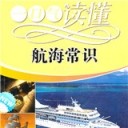海上运输的工具是船舶,在茫茫大海,靠船舶将货、客运送到大洋的彼岸、地球的另一半球。因此,要了解航海,首先必须了解什么叫船舶,船舶有哪些设备,应具备哪些性能等等。本章将介绍船舶的种类、船舶的的构成及各部分的名称、船舶的主要尺度、船舶的主要性能和主要设备等基础知识。
船舶基本知识
一、船舶种类
船舶是水上运输和工程作业的主要工具,其种类繁多、数目庞大。按用途分,有民用船和军用船;按船体材料分,有木船、钢船、水泥船和玻璃钢船等;按航行区域分,有远洋船、近洋船、沿海船和内河船等;按动力装置分,有蒸汽机船、内燃机船、汽轮机船、电动船和核动力船等;按推进方式分,有明轮船、螺旋桨船、平旋推进器船和风帆助航船等;按航行方式分,有自航船和非自航船;按航行状态分,有排水型和非排水型船。民用船舶分类中通常是按用途进行划分,现分别简要介绍如下:
Freighters
Liquid cargo
Tanker
Tankers - one of the most popular types of troop ships making up 65% of water transport. They transport crude oil and petroleum products such as chute and diesel oil at a speed of 12-20 knots. Tankers are one-decked ships with the engine room and superstructure at the stern and a pump compartment often at the bow. The middle part of the tanker consists of a group of identical sections (called tanks) separated by cross walls in the hull. Hence the name of tankers. Each tank is equipped with a heating coil. You may wonder what the heating coil is for. In winter conditions liquid cargo, e.g. chute freezes and cannot be pumped out (and thus, unloaded). The coil gives off heat in the tank and keeps the chute fluid this way making pumping easier and faster. Ship design includes also the so-called "catwalk with the pipes" - this is a bridge which connects the superstructure (in the rear) with the forecastle (in the front). Thus, sailors do not have to walk along the deck to reach the forecastle machinery but can use this bridge. This is done as a safety measure rather than because of a whim. Let us explain - because tankers have quite a low freeboard, in a storm high waves may flow over the deck and threaten the crew. That's why a "catwalk" is built high above the deck. Gigantic tankers do not have catwalks with the pipes but other "paths" instead.
With their fast rate of growth, tankers leave all other ships behind. In 1953, the first supertanker was launched under the name of "Tina Onasis". She had a deadweight capacity of 46,080 t. Only twenty years later, the world has tankers reaching 500,000 t and above. A remarkable progress!
Type of Tanker
Deadweight tonnage
Product carrier (for petroleum products) 10,000 - 60,000 t
CC (Crude Carrier) Up to 80,000 t
LCC (Large Crude Carrier) 80,000 t - 120,000 t
VLCC (Very Large Crude Carrier) 120,000 t - 250,000 t
ULCC (Ultra Large Crude Carrier) Over 250,000 t
But why are such gigantic ships built? Economists estimate that the profit from a supertanker will be bigger than from a common small tanker. However, the trend is towards building tankers with a deadweight of up to 250,000 t mainly because smaller ships are able to access all sea ports. Also, there are some rules and regulations which prohibit the release of dirty water (which comes from washing the tanks) straight into the ocean. According to these laws, wash-over of tanks should be done at special purifying places in ports and should be paid for. Now think of a titanic supertanker with her huge and numerous tanks. And now imagine the ship owner's eyes when he receives the bill! Another important reason is probably the danger of oil spillage which kills marine flora and fauna. The best known case of a tanker wreck and oil spill is the "Torrey Canyon" ship in 1967. The spill of nearly 107,000 t of oil caused irretrievable damage to the whole region. Reports indicate that the total amount of oil discharged into the oceans from tankers is about 1,000,000 t each year.
LPG carrier
LPG carriers (Liquid Petroleum Gas carriers) - built to carry liquid gases, either natural gases or products of oil processing (methane, propane, butane), for chemical industry; speed 12-20 knots;
The manufacture of LPG carriers starts in the 50-s, with the first being produced by Sweden and having the scant deadweight of 455 t - at the beginning people were still at a loss about how to transport this kind of cargo. Soon later, larger LPG carriers were built. Gases (which are kept in three conditions - liquid, cooled or under pressure) are held in special reservoirs with cylindrical, spherical or square shape made of aluminum or nickel alloys. Steel cannot be used as in tankers because cooled gases in the reservoirs have a temperature of -162 C (-260 F) and make the steel walls as fragile as glass. Actually, LPG carriers are quite expensive to produce.
Safety measures are vitally important. Ventilation is provided in all of the compartments (containing gas reservoirs) to prevent dangerous chemical reactions through air between gases. Living quarters are located in the stern and are equipped with oxygen-supply devices. Anti-fire systems are installed everywhere.
Chemical carrier
Chemical carrier - they transport chemicals such as sulfuric acid, phosphoric acid and ammonia. Some products require special conditions - for example, asphalt and liquid sulfur need to be warmed so as not to cool down during transportation.
Other ships for liquid cargo
--carry water, wine, vegetable oils, olive oils, etc.
集装箱船(container ship)
是指以装运集装箱货物为主的船舶。事先将货物装入集装箱内,再把集装箱装上船。这种运输方式的优点是装卸效率高、降低劳动强度、减少货损货差和便于开展多式联运。目前,集装箱运输发展很快,已成为件杂货的主运输方式。
集装箱船基本上可以分为全集装箱船和半集装箱船两大类。全集装箱船的货舱和甲板均能装载集装箱。货舱内设有格栅式货架,以利货箱的固定。其甲板和货舱盖是平直的,上面可以装2~4层集装箱,如图1-7所示。通常船上不设起货设备,而利用码头上的专用设备装卸。半集装箱船则而在部分货舱装运集装箱,其他货舱装运杂货或散货。
集装箱船的货舱舱口很大,为了保证船体强度,采用双层船壳。其不仅装卸效率高,船速也较快,多在20k n 以上。目前,已建造第六代集装箱船,可装载8000个集装箱。
滚装船(roll on/roll off ship , RO/RO)
是一种采用水平装卸方式的船舶。它装运的货物主要是汽车和集装箱。装卸时,在船的尾部、舷侧或首部,有跳板放到码头上,汽车或拖车通过跳板开上开下,实现货物的装卸。帮滚装船又称开上开下船或滚上滚下船,如图所示。
滚装船的上层建筑高大,最上层的露天甲板平坦,无起货设备。货舱内设有多层纵通甲板,汽车或拖车可以通过坡道或升降平台进入各层舱内。滚装般对码头要求低,装卸效率高,船速较快。但舱容利用率低,造价高。
载驳船(barge carrier)
又称子母船,它先将货物装在规格相同的小驳船里,再将这些小驳船装到母船上一起运输,如图所示。
载驳船的优点是可以提高装卸效率,缩短船舶停港时间,加速船舶周转,而且不受港口、码头和装卸设备的限制,同时便于把海河联运有机地结合起来。缺点是载驳船的高度的组织管理较为复杂,目前发展缓慢。
冷藏船(refrigerator ship)
是运送肉、鱼、疏菜和水果等易腐货物的专用船舶,其船舶结构与杂货船相近,但货舱口较小,货舱具良好的隔热功能,并配有大能量的制冷装置。由于受货源批量的限制,冷藏船的吨位一般在万吨以下。目前,用于装运冷藏货物的冷藏集装箱发展迅速。由于其运输方便,所以在某种程度上取代了冷藏船的运输。
船舶基本知识
一、船舶种类
船舶是水上运输和工程作业的主要工具,其种类繁多、数目庞大。按用途分,有民用船和军用船;按船体材料分,有木船、钢船、水泥船和玻璃钢船等;按航行区域分,有远洋船、近洋船、沿海船和内河船等;按动力装置分,有蒸汽机船、内燃机船、汽轮机船、电动船和核动力船等;按推进方式分,有明轮船、螺旋桨船、平旋推进器船和风帆助航船等;按航行方式分,有自航船和非自航船;按航行状态分,有排水型和非排水型船。民用船舶分类中通常是按用途进行划分,现分别简要介绍如下:
Freighters
Liquid cargo
Tanker
Tankers - one of the most popular types of troop ships making up 65% of water transport. They transport crude oil and petroleum products such as chute and diesel oil at a speed of 12-20 knots. Tankers are one-decked ships with the engine room and superstructure at the stern and a pump compartment often at the bow. The middle part of the tanker consists of a group of identical sections (called tanks) separated by cross walls in the hull. Hence the name of tankers. Each tank is equipped with a heating coil. You may wonder what the heating coil is for. In winter conditions liquid cargo, e.g. chute freezes and cannot be pumped out (and thus, unloaded). The coil gives off heat in the tank and keeps the chute fluid this way making pumping easier and faster. Ship design includes also the so-called "catwalk with the pipes" - this is a bridge which connects the superstructure (in the rear) with the forecastle (in the front). Thus, sailors do not have to walk along the deck to reach the forecastle machinery but can use this bridge. This is done as a safety measure rather than because of a whim. Let us explain - because tankers have quite a low freeboard, in a storm high waves may flow over the deck and threaten the crew. That's why a "catwalk" is built high above the deck. Gigantic tankers do not have catwalks with the pipes but other "paths" instead.
With their fast rate of growth, tankers leave all other ships behind. In 1953, the first supertanker was launched under the name of "Tina Onasis". She had a deadweight capacity of 46,080 t. Only twenty years later, the world has tankers reaching 500,000 t and above. A remarkable progress!
Type of Tanker
Deadweight tonnage
Product carrier (for petroleum products) 10,000 - 60,000 t
CC (Crude Carrier) Up to 80,000 t
LCC (Large Crude Carrier) 80,000 t - 120,000 t
VLCC (Very Large Crude Carrier) 120,000 t - 250,000 t
ULCC (Ultra Large Crude Carrier) Over 250,000 t
But why are such gigantic ships built? Economists estimate that the profit from a supertanker will be bigger than from a common small tanker. However, the trend is towards building tankers with a deadweight of up to 250,000 t mainly because smaller ships are able to access all sea ports. Also, there are some rules and regulations which prohibit the release of dirty water (which comes from washing the tanks) straight into the ocean. According to these laws, wash-over of tanks should be done at special purifying places in ports and should be paid for. Now think of a titanic supertanker with her huge and numerous tanks. And now imagine the ship owner's eyes when he receives the bill! Another important reason is probably the danger of oil spillage which kills marine flora and fauna. The best known case of a tanker wreck and oil spill is the "Torrey Canyon" ship in 1967. The spill of nearly 107,000 t of oil caused irretrievable damage to the whole region. Reports indicate that the total amount of oil discharged into the oceans from tankers is about 1,000,000 t each year.
LPG carrier
LPG carriers (Liquid Petroleum Gas carriers) - built to carry liquid gases, either natural gases or products of oil processing (methane, propane, butane), for chemical industry; speed 12-20 knots;
The manufacture of LPG carriers starts in the 50-s, with the first being produced by Sweden and having the scant deadweight of 455 t - at the beginning people were still at a loss about how to transport this kind of cargo. Soon later, larger LPG carriers were built. Gases (which are kept in three conditions - liquid, cooled or under pressure) are held in special reservoirs with cylindrical, spherical or square shape made of aluminum or nickel alloys. Steel cannot be used as in tankers because cooled gases in the reservoirs have a temperature of -162 C (-260 F) and make the steel walls as fragile as glass. Actually, LPG carriers are quite expensive to produce.
Safety measures are vitally important. Ventilation is provided in all of the compartments (containing gas reservoirs) to prevent dangerous chemical reactions through air between gases. Living quarters are located in the stern and are equipped with oxygen-supply devices. Anti-fire systems are installed everywhere.
Chemical carrier
Chemical carrier - they transport chemicals such as sulfuric acid, phosphoric acid and ammonia. Some products require special conditions - for example, asphalt and liquid sulfur need to be warmed so as not to cool down during transportation.
Other ships for liquid cargo
--carry water, wine, vegetable oils, olive oils, etc.
集装箱船(container ship)
是指以装运集装箱货物为主的船舶。事先将货物装入集装箱内,再把集装箱装上船。这种运输方式的优点是装卸效率高、降低劳动强度、减少货损货差和便于开展多式联运。目前,集装箱运输发展很快,已成为件杂货的主运输方式。
集装箱船基本上可以分为全集装箱船和半集装箱船两大类。全集装箱船的货舱和甲板均能装载集装箱。货舱内设有格栅式货架,以利货箱的固定。其甲板和货舱盖是平直的,上面可以装2~4层集装箱,如图1-7所示。通常船上不设起货设备,而利用码头上的专用设备装卸。半集装箱船则而在部分货舱装运集装箱,其他货舱装运杂货或散货。
集装箱船的货舱舱口很大,为了保证船体强度,采用双层船壳。其不仅装卸效率高,船速也较快,多在20k n 以上。目前,已建造第六代集装箱船,可装载8000个集装箱。
滚装船(roll on/roll off ship , RO/RO)
是一种采用水平装卸方式的船舶。它装运的货物主要是汽车和集装箱。装卸时,在船的尾部、舷侧或首部,有跳板放到码头上,汽车或拖车通过跳板开上开下,实现货物的装卸。帮滚装船又称开上开下船或滚上滚下船,如图所示。
滚装船的上层建筑高大,最上层的露天甲板平坦,无起货设备。货舱内设有多层纵通甲板,汽车或拖车可以通过坡道或升降平台进入各层舱内。滚装般对码头要求低,装卸效率高,船速较快。但舱容利用率低,造价高。
载驳船(barge carrier)
又称子母船,它先将货物装在规格相同的小驳船里,再将这些小驳船装到母船上一起运输,如图所示。
载驳船的优点是可以提高装卸效率,缩短船舶停港时间,加速船舶周转,而且不受港口、码头和装卸设备的限制,同时便于把海河联运有机地结合起来。缺点是载驳船的高度的组织管理较为复杂,目前发展缓慢。
冷藏船(refrigerator ship)
是运送肉、鱼、疏菜和水果等易腐货物的专用船舶,其船舶结构与杂货船相近,但货舱口较小,货舱具良好的隔热功能,并配有大能量的制冷装置。由于受货源批量的限制,冷藏船的吨位一般在万吨以下。目前,用于装运冷藏货物的冷藏集装箱发展迅速。由于其运输方便,所以在某种程度上取代了冷藏船的运输。
请登录后发帖

 联系我们人工客服
联系我们人工客服



















 :1391995811
:1391995811

